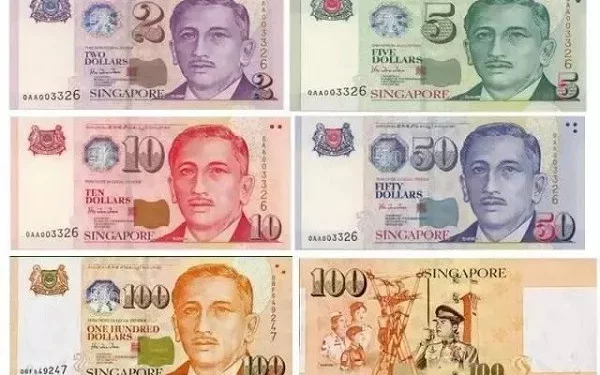In the dynamic landscape of global economics, currency exchange rates play a pivotal role in shaping international trade and investment. Among these, the Singapore Dollar to Indian Rupee exchange rate, often denoted as SGD to INR, stands as a key indicator of the economic relationship between Singapore and India. In this article, we delve into the intricacies of the current SGD to INR exchange rate, exploring its implications, factors influencing it, and its impact on businesses and individuals alike.
Current Exchange Rate Analysis
At the time of writing, the SGD to INR exchange rate is 1 SGD to INR 62.67. This numerical representation is more than just a financial figure; it encapsulates the value of one Singapore Dollar in terms of Indian Rupees. Understanding this rate is essential for businesses engaged in cross-border trade, investors diversifying their portfolios, and even travelers planning their budgets.
Economic Factors Influencing SGD to INR
Several economic factors contribute to the fluctuation of the SGD to INR exchange rate. One prominent factor is the trade balance between Singapore and India. A positive trade balance for Singapore, exporting more goods and services to India than it imports, can strengthen the SGD against the INR. Conversely, economic events, political stability, and inflation rates in both countries can impact the exchange rate dynamics.
Trade Surplus and Its Impact on SGD to INR
Singapore has historically maintained a trade surplus, exporting a range of products and services globally. In the context of SGD to INR, a surplus implies that more Singapore Dollars are flowing into India for goods and services than the reverse. This increased demand for SGD can influence its value against the INR, resulting in a higher exchange rate.
Political Stability’s Role in Exchange Rate Stability
Political stability is another crucial factor affecting the SGD to INR exchange rate. Investors and traders tend to favor currencies of politically stable countries, as it reduces the risk associated with currency fluctuations. Any signs of political instability in either Singapore or India can cause a ripple effect, impacting investor confidence and subsequently influencing the SGD to INR exchange rate.
Inflation Rates and Currency Value
Inflation differentials between Singapore and India can significantly impact the SGD to INR exchange rate. If inflation in Singapore is lower than in India, the real value of the Singapore Dollar increases, attracting more demand. Investors seek currencies with lower inflation rates to preserve their purchasing power, which can contribute to a higher SGD to INR exchange rate.
Global Economic Events and Exchange Rate Volatility
The interconnected nature of the global economy means that events in one part of the world can reverberate across currency markets. For the SGD to INR exchange rate, global economic events such as financial crises, geopolitical tensions, and changes in commodity prices can introduce volatility. Investors and businesses must closely monitor these events to navigate the fluctuations in the SGD to INR exchange rate.
Implications for Businesses
Businesses engaged in cross-border trade between Singapore and India must carefully analyze the SGD to INR exchange rate. A favorable exchange rate can enhance profit margins for Singaporean exporters, while it may increase costs for Indian businesses importing goods and services. Effective risk management strategies, such as hedging, are crucial for businesses to mitigate the impact of exchange rate fluctuations on their bottom line.
Investor Perspectives on SGD to INR Exchange Rate
Investors diversifying their portfolios across international markets closely track exchange rates, including SGD to INR. A stronger Singapore Dollar may present investment opportunities in Singaporean assets, while a weaker INR could affect returns on Indian investments. Diversification strategies, including exposure to both SGD and INR assets, can help investors manage currency risk and optimize their portfolios.
Traveler Considerations: Planning with SGD to INR in Mind
For travelers planning to visit either Singapore or India, the SGD to INR exchange rate holds significant implications. A higher exchange rate means that travelers exchanging Singapore Dollars for Indian Rupees receive more value, allowing for a more favorable travel budget. Conversely, a lower exchange rate may warrant careful budgeting to account for increased conversion costs.
See Also: Current SGD Exchange Rate: 1 Singapore Dollar to Indian Rupee
Future Outlook: Factors Affecting SGD to INR Exchange Rate Trends
Predicting future trends in the SGD to INR exchange rate involves considering ongoing economic developments. Trade agreements, monetary policies, and global economic conditions will play a crucial role. As both Singapore and India continue to evolve economically, the SGD to INR exchange rate will likely experience fluctuations, making it imperative for businesses and investors to stay informed.
Conclusion
In conclusion, the SGD to INR exchange rate is a multifaceted indicator reflecting the economic dynamics between Singapore and India. Its fluctuations are influenced by a myriad of factors, ranging from trade balances and political stability to inflation rates and global economic events. As businesses, investors, and travelers navigate the intricate world of international finance, understanding the SGD to INR exchange rate becomes paramount for informed decision-making and financial planning.
Related Topics:
Is the Singapore Dollar Pegged to the US Dollar?
Does Singapore Accept US Dollars? A Guide
An In-Depth Look at the Currency of Singapore


























